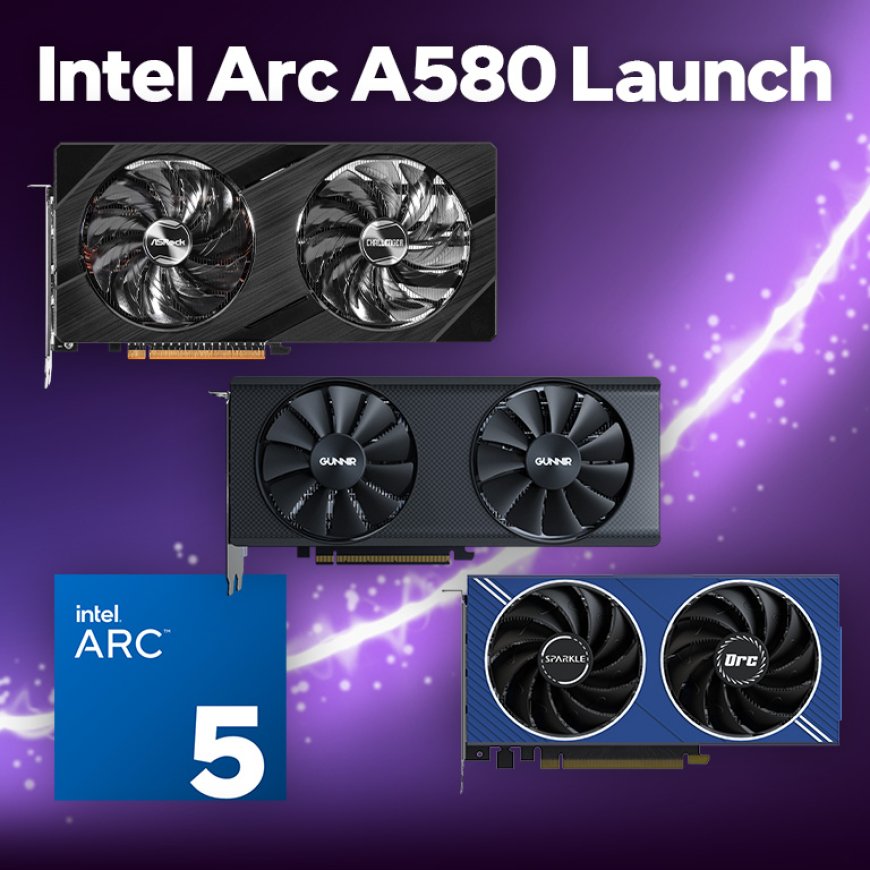The Intel Arc A580 Graphics Card
The Intel Arc A580 graphics card, the latest addition to the Arc A-series, is based on the Alchemist GPU architecture. Priced at $180, it brings modern features such as AV1 encoding, XeSS support, and ray tracing to a more budget-friendly segment. This review aims to provide a comprehensive analysis of the A580's performance, features, and value proposition.

Key Features and Specifications of the Arc A580
Comparing the A580 to Other Models in the Series
While the A580 is more affordable than its sibling, the A750, it also comes with slightly reduced performance. However, it is expected to significantly outperform the much slower A380. Sharing similar specs and silicon with the A750 and A770, the A580 positions itself closer to these higher-end models.
Also check QUICK HEAL INTERNET SECURITY PREMIUM
Detailed Specifications of the A580
The Arc A580 is equipped with 3072 shader units, 192 Texture Mapping Units (TMUs), and 96 Render Output Units (ROPs). This configuration marks a 14% reduction in shader units and ROPs compared to the A750 but maintains the same number of TMUs. Notably, the A580 offers a substantial increase in these areas compared to the A380.
Another aspect where the A580 falls short of the A750 is its L2 cache, which is 33% smaller at 8 MB. However, in most other respects, the A580 closely resembles the A750 and the 8GB A770, particularly in memory configuration. It comes with 8GB of GDDR6 memory, operating at 16 Gbps on a 256-bit wide memory bus, resulting in a total bandwidth of 512 GB/s. The card supports a full x16 PCIe 4.0 interface and has a Thermal Design Power (TDP) of 175 watts.
Performance Expectations and Market Position
Anticipated Performance Levels
Given its specifications, the A580 is expected to deliver decent performance, especially in comparison to the lower-tier A380. The review will delve into what users can expect in terms of gaming and computing capabilities from this new offering from Intel.
Market Comparison and Value Assessment
The A580's market position will be evaluated by comparing it to similar offerings from competitors and assessing its value for money. This section aims to determine whether the A580 stands out in the crowded mid-range GPU market and if it represents a good investment for potential buyers.
Conclusion: The Intel Arc A580's Place in the GPU Market
Final Thoughts on the A580
The conclusion will summarize the Arc A580's strengths and weaknesses, offering a final verdict on its performance, feature set, and overall value. It will address whether the A580 successfully fills a niche in the current GPU market and meets the needs of its target audience.
Implications for Intel's Future in GPUs
Finally, the review will speculate on what the A580 means for Intel's future in the graphics card market. Consideration will be given to how the A580 fits into Intel's broader strategy and what it suggests about the company's direction in GPU development.


































